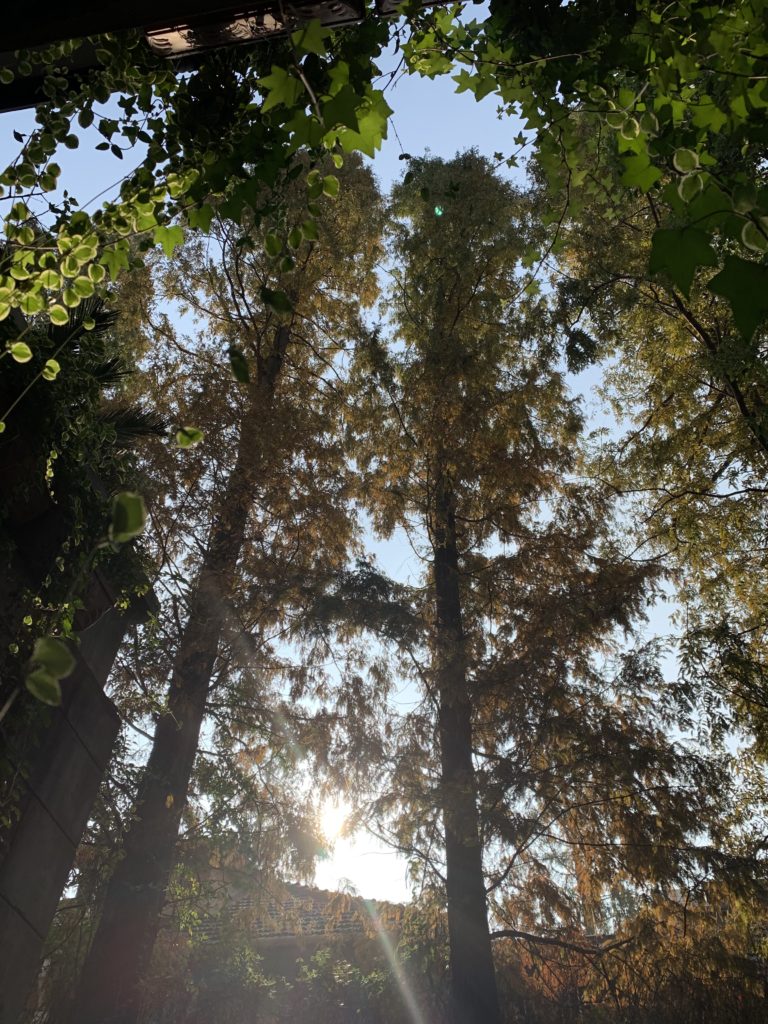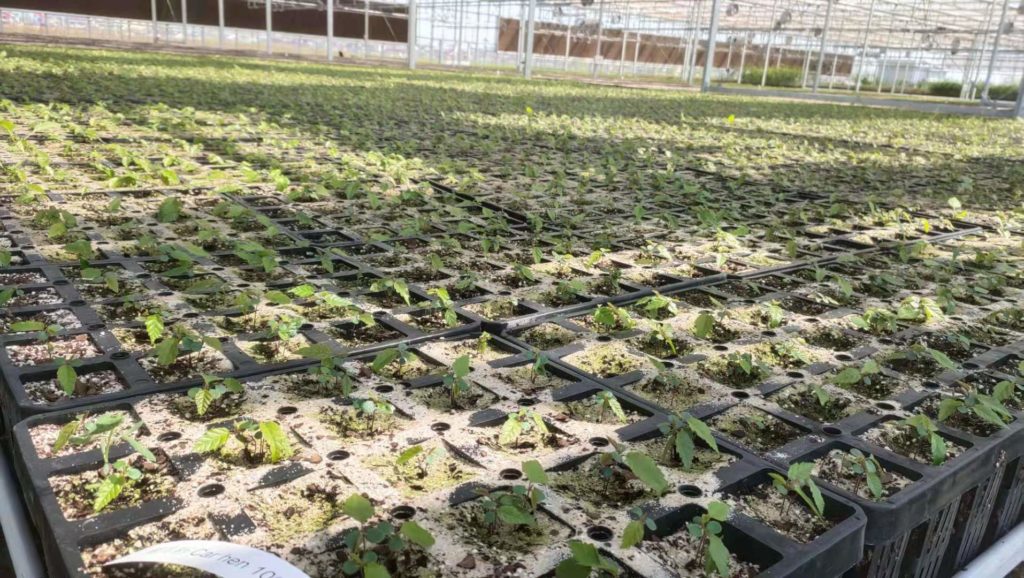This summer England experienced its highest temperatures ever. This spring, the Indian subcontinent’s month-long heatwave saw records shattered. Last year in Oregon, where I live, we shot past our all-time record high not by a degree or two but by 10°F. The planet is cooking.
It is easy to hold these weather events discreet, but they are not. Global carbon dioxide levels, after a small dip in the early days of the pandemic, are again rising, and have hit an all-time high of 419 ppm, up 150% from levels in 1750 and up 41 ppm from 2005 (Nasa 2022). In 2019, humans were responsible for the release of about 35 billion tons of CO2. The Experts at the IPCC believe we need to remove about 730 billion tons of CO2 before the end of the century to limit climate warming to 2°C. Trees help mitigate global climate change in many ways but removing carbon from the air is what they do best. Society is relying on that trait to help fix this carbon problem.
According to the MIT Climate Portal, visualize a ton of carbon as a cube 27 feet long on a side, which is about the length of a London double decker bus. A new cube large enough to hold all 730 billion tons of CO2, built of the small 27- foot cubes, would be 46 miles wide, tall, and deep.
(Tso 2020)
An analysis of global tree density suggests that there are more than 3 trillion trees remaining on the planet. This is some 46% less than the start of human civilization (Crowther 2015). Between 2000 and 2012 alone, 2.3 million km2 of forest was cut (Hansen 2013), and deforestation remains stubbornly high with global forest cover loss of 250K km2 in 2021. It’s these studies that give credibility to global plans to plant more than a trillion tree in the coming decades.
Given that it takes ~75 years for the stored carbon levels in regenerating forests to match those in mature forests (Chazdon 2016), the time for action is now. To ensure global tree planting projects are making the greatest positive impact and pulling meaningful amounts of carbon from the air, it is imperative to focus on the following criteria.
Implementation
Even small dollar donations make big impacts when pooled by organizations that leverage their planting partners. These partners, not the organization itself, plant the trees. Through close relationships, this model accesses local and regional sites that need trees. Other organizations, such as Trella Urban Forestry Technology, practicing reforestation plant trees themselves. These reforestation projects are often large and may require corresponding corporate investments.
Additionality & Permanence
To qualify projects for carbon offset credits, international standards have been setup to evaluate whether a forest is capturing additional carbon beyond business as usual. Projects that would occur without carbon financing aren’t additional. For example, because lumber plantations are profitable, arguing they need carbon investment to plant trees is misleading. Similarly, projects replacing recently removed forests aren’t additional; one can’t cut down the forest, plant a new one, and claim it for carbon offset. Carbon offsets are only available when the trees planted wouldn’t otherwise have grown and when the carbon those trees capture is permanently stored. There are four different areas to qualify a project: afforestation (which under some REDD+ rules includes plantations), reforestation, avoided conversion, and improved forest management. Of the four project types, afforestation is the most scrutinized, especially concerning which forests qualify for additionality and don’t violate the permanence rule. Issuing carbon credits against the carbon stored in existing forests is a way to finance their continued existence – avoided conversion.

Forest Types
Trees are planted into three broad kinds of forests: afforestation, plantations, and reforestation. Each sequesters carbon at different rates, with some even releasing carbon.
Afforestation
Growing trees where trees haven’t grown is called afforestation and usually creates a negative environmental impact as changing non-degraded ecosystems to a new ecosystem type is destructive. (Seddon 2019, Ratajczak 2012, Yang 2010). The failure rate of afforestation projects is evidence that planting trees where tree don’t grow is poor practice (Zhang 2021). Afforestation leads to the loss of valuable biodiversity and doesn’t account for the carbon function in the ecosystem it is replacing. Grasslands, in contrast, hold great biodiversity and store vast amounts of carbon in the soil pool (Veldman 2015). Ecologically destroyed sites, like strip mines, are better candidates for afforestation. Afforestation projects must meet permanence to qualify for carbon offsets, and offsets issued on the restoration of degraded land should withstand scrutiny.
Plantation
Offset credits issued against plantations run the real risk of being greenwashing. Forest plantations are a type of afforestation, and the trees grow as a crop. Similar to the caloric value stored in grains of wheat in a field, the carbon we want is stored in the wood of the trees in the plantation. While wheat is harvested the same year it’s planted, a plantation of trees might not be harvested for 20, 40, or even 80 years. Usually, plantations are a single tree species, often non-native. They sequester carbon while growing but less than would be sequestered by mixed stands of native tree species. At harvest, all the carbon stored in the ground below the plantation releases back into the atmosphere. Any wood that burns or decomposes after its use also releases its carbon (Lewis 2019). Plantations, rather than having a net reduction of carbon, often result in a net increase.

Reforestation
Replanting trees in deforested areas is known as reforestation. Mixed native species reforestation projects capture more carbon than afforestation and plantations. Because the goal is permanent carbon removal, reforestation is a plan for forest protection far into the future. Successful projects transition the trees into natural regeneration, creating a rewilded forest. Even under the least optimistic climate scenarios, reforestation can have significant carbon storage (Jin 2022). Species and location dependent, the rewilding transition might take 75 years. It’s about then that the carbon storage in a rewilded forest starts to catch up to that of the trees and soil in a wild forest. Because carbon storage increases with tree size even in ancient mature trees, carbon storage in secondary forests will be less than wild forests (Jin 2022, Tang 2011). Trees planted to reforest ground that’s been cleared of forest cover for at least ten years can qualify for carbon offset credits. When these carbon credit verification rules are followed, offsets issued on reforestation are reputable.
Quantity
All reforestation or carbon offset programs pitch their efforts on the number of trees planted. Easy to understand, it’s honest for the outset – all those seedlings are needed when they’re young – but tree count isn’t a good metric of program effectiveness. A lot more trees are planted than can survive, so understanding the area of forest planted is a more accurate reflection of project impact.
Reforestation starts with small seedlings, usually only a year old. Planting them into the semi-wilderness is risky, and many of them will die. During the first few years, the seedlings are sensitive to drought, much more so than natural, wild germinated seedlings. Animals and insects kill young seedlings too, not to mention the fierce competition for light from weeds. Acknowledging the brutality of nature, many extra seedlings are planted in forestry projects. Many mature temperate forests grow with as few as 500 trees per hectare, but at planting there were a 1,000 or more. At planting and shortly after some of the seedlings die. Then as the canopy begins to close and the limbs touch, workers will kill half or more of the remaining saplings. This allows the remaining trees to mature and for the forest to maximize its carbon storage. Offset programs measure and prioritize total project carbon capture rather than capture per individual tree as the number of living trees doesn’t matter as long as the amount of carbon sequestered in the whole project increases.
References:
Chazdon, R.L. & Guariguata, M.R. (2016), Natural regeneration as a tool for large-scale forest restoration in the tropics: prospects and challenges. Biotropica, 48: 716-730. https://doi.org/10.1111/btp.12381
Crowther, T., Glick, H., & Covey, K. et al. (2015) Mapping tree density at a global scale. Nature 525, 201–205. https://doi.org/10.1038/nature14967
Hansen, M., Potapov, P., & Moore, R., et al. (2013) High-Resolution Global Maps of 21st-Century. Forest Cover Change. Science, 342-6160, 850-853. https://doi.org/10.1126/science.1244693
Jin, J., Xiang, W., & Zeng, Y. et al. (2022) Stand carbon storage and net primary production in China’s subtropical secondary forests are predicted to increase by 2060. Carbon Balance Manage 17,6. https://doi.org/10.1186/s13021-022-00204-y
Nasa. “Carbon Dioxide – Vital Signs – Climate Change: Vital Signs of the Planet” Accessed July 19, 2020. https://climate.nasa.gov/vital-signs/carbon-dioxide/
Nasa. “Video: Climate Spiral” Accessed August 11, 2022. https://climate.nasa.gov/climate_resources /300/video-climate-spiral/
Ratajczak, Z., Nippert, J. B., & Collins, S. L. (2012) Woody encroachment decreases diversity across North American grasslands and savannas. Ecology 93, 4, 697-703. https://doi.org/10.1890/11-1199.1.
Seddon, N., Turner, B., Berry, P., Chausson, A., & Girardin, C. (2019). Grounding nature-based climate solutions in sound biodiversity science. Nature Climate Change. 9. 84-87. https://doi.org/10.1038/s41558-019-0405-0.
Tso, Kathryn. “How much is a ton of carbon dioxide?” MIT Climate Portal. December 2, 2020. https://climate.mit.edu/ask-mit/how-much-ton-carbon-dioxide
Tang, X., Wang, Y., Zhou, G., Zhang, D., Shen Liu, Shizhong Liu, Zhang, Q., Juxiu Liu, Yan, J. (2011). Different patterns of ecosystem carbon accumulation between a young and an old-growth subtropical forest in Southern China, Plant Ecol, 212:1385-1395. https//doi.org/10.1007/s11258-011-9914-2
Veldman, J., Overbeck, G., Negreiros, D., Mahy, G., Le Stradic, S., Fernandes, G. W., Durigan, G., Buisson, E., Putz, F. E., Bond, W. J. (2015) Where Tree Planting and Forest Expansion are Bad for Biodiversity and Ecosystem Services, BioScience, 65,10, 1011–1018. https://doi.org/10.1093/biosci/biv118.
Yang, K., Jiao-jun, Z., Zhang, M., Yan, Q., & Sun, O. (2010). Soil microbial biomass carbon and nitrogen in forest ecosystems of Northeast China: A comparison between natural secondary forest and larch plantation. Journal of Plant Ecology. 3. 175-182. https://doi.org/10.1093/jpe/rtq022.
Zhang, L., Sun, P., Huettmann, F., & Liu, S. (2022) Where should China practice forestry in a warming world? Global Change Biology, 28, 2461-2475. https://doi.org/10.1111/gcb.16065

